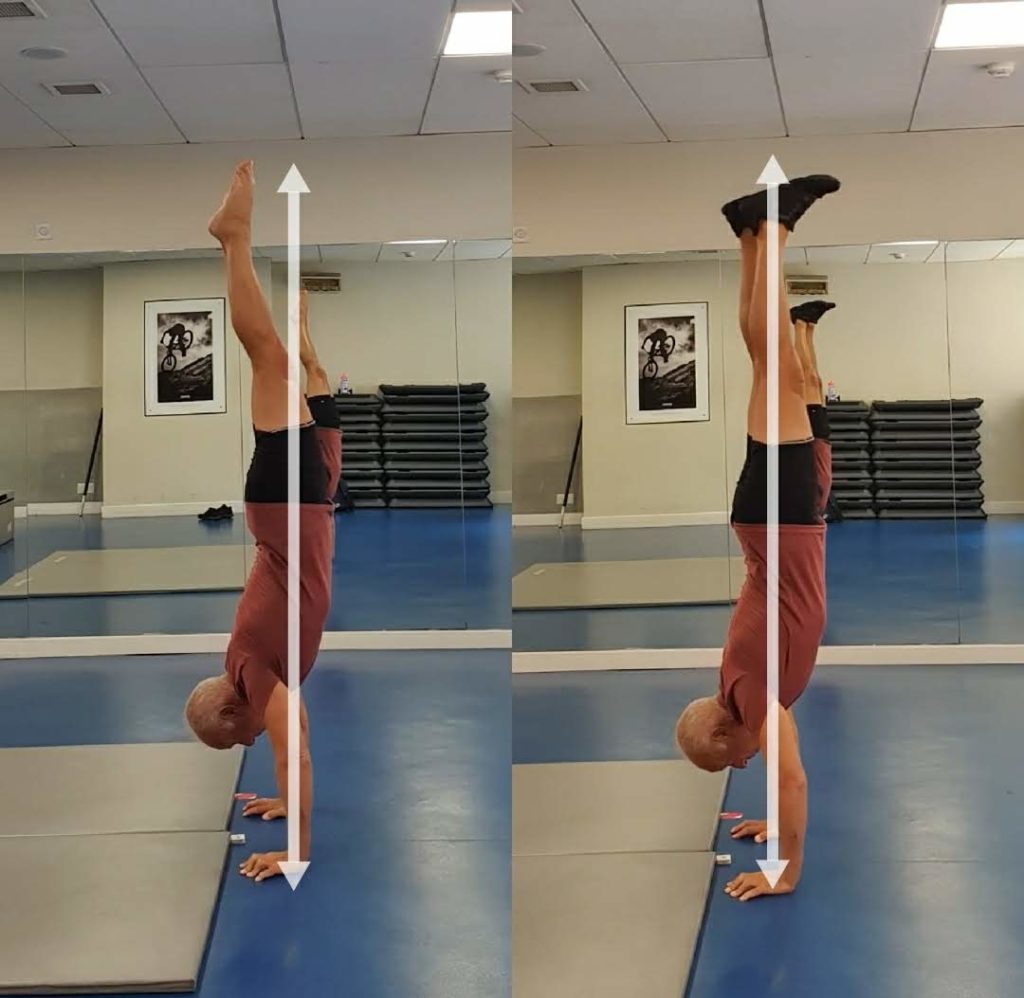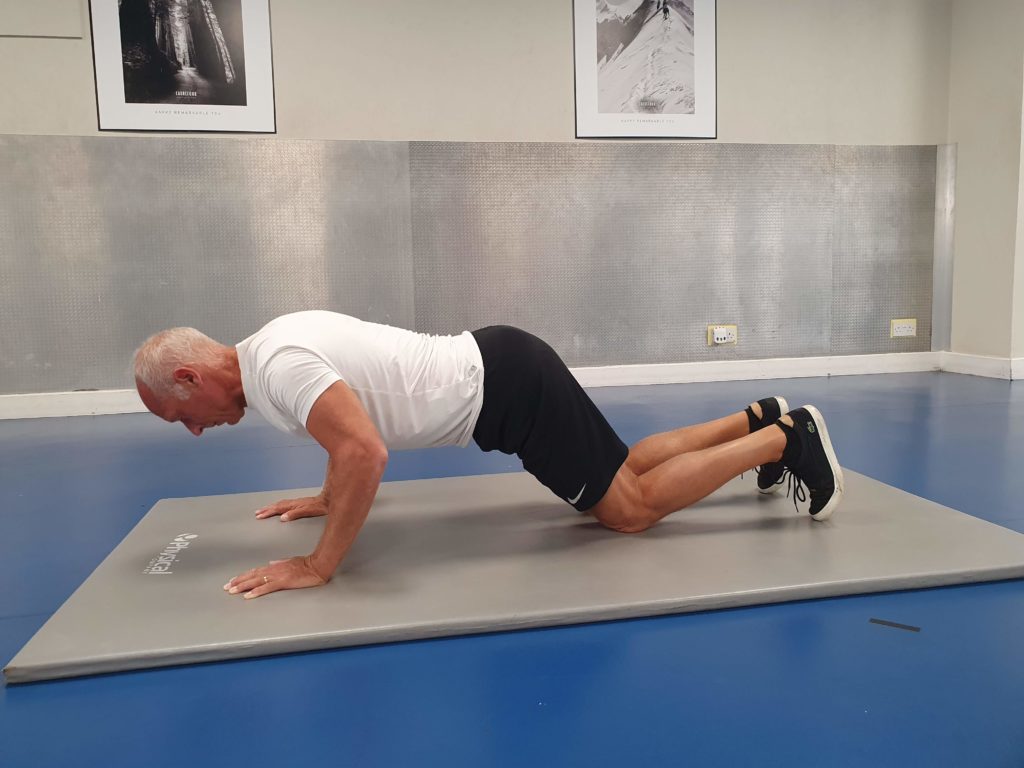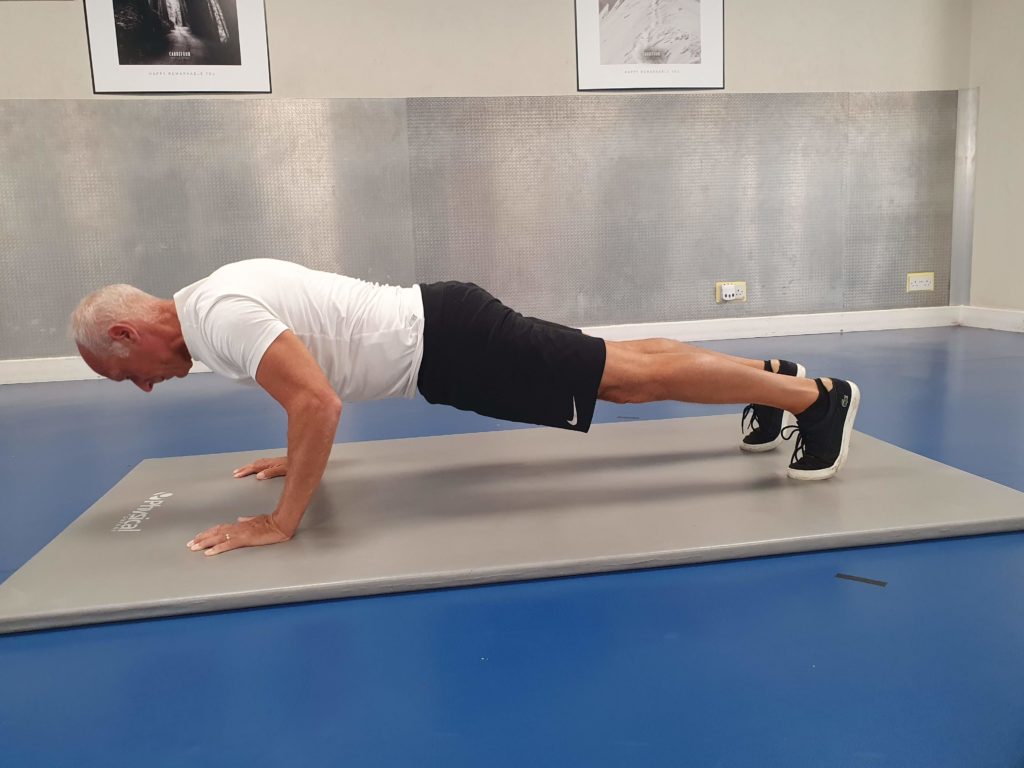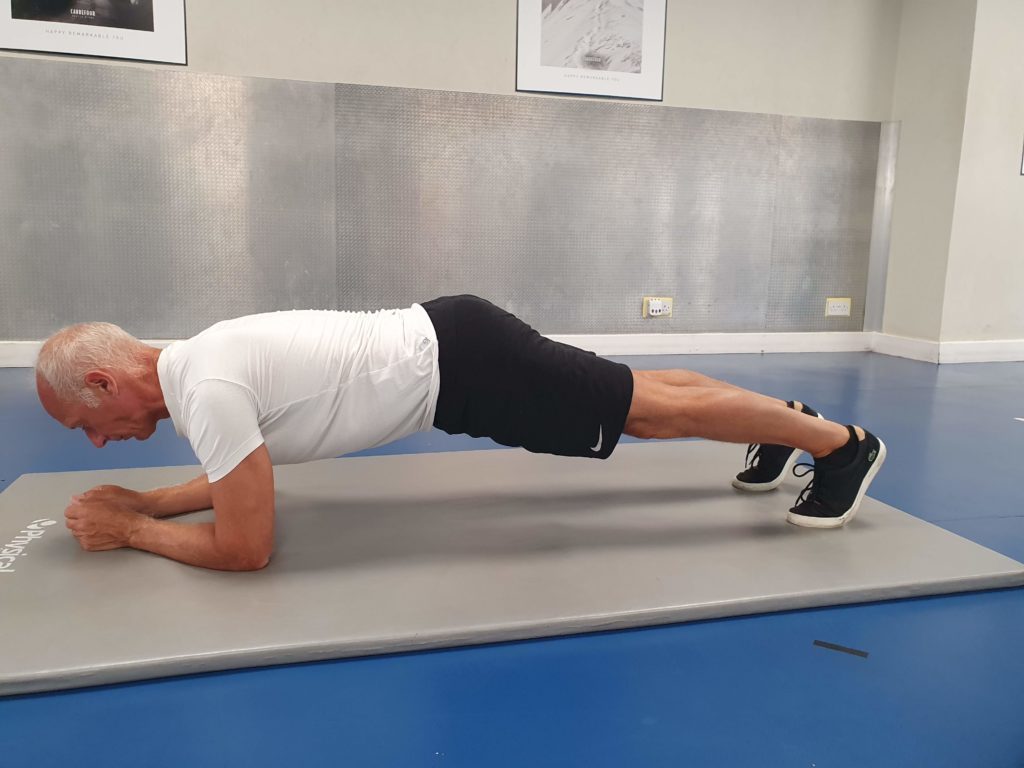Handstands, Fitness and Coding

5th September 2020
“Many coders and other digital professionals spend long hours at their desk or computers without easy access to the gym … body weight training requires little equipment or space and can be challenging and fun!”
When Covid levels rose so too did anxiety levels, lockdowns and the price of dumbbells! With people no longer having access to gyms, swimming or long distance cycling, individuals had to make the most of their surroundings or their limited hour of exercise. The price of home gym equipment rocketed.
Richard Rolfe the founder of National Coding week turned 58 this year, an avid gym goer he used Callisthenics or body weight training to help stay fit during lockdown. As a cancer survivor he knew that keeping fit and staying healthy was essential for his physical and mental well-being and with the sports shops’ shelves empty or with astronomical prices for basic products he decided to focus on using his body as a piece of gym equipment!
What is Callisthenics?
Callisthenics uses the body’s own weight to perform exercises with differing levels of intensity. These exercises allow for the development of strength, endurance, flexibility, and coordination. With no gym equipment and lots of online support Richard could keep fit, have fun and make progress – so what did he do?
“I love to challenge myself and on January 1st 2019 I set a goal to learn to handstand! It was almost a pointless and impossible goal, after all why would a someone my age need to hand stand?”
Setting an almost impossible challenge helps to make me think differently, I approached it as a problem solving challenge. Learning to code taught me that the coding isn’t just about coding, what goes hand in hand are skills such as problem solving, communication and creative thinking. These skills are used in callisthenics and help build confidence when learning to handstand.
I had help with video play back, online help and a mentor but the only way to succeed in a handstand is literally to rise and fall, succeed for a split second and fail a hundred times a week. Getting good feedback helps turn a ‘banana shaped’ handstand into a straighter handstand. I used problem solving, communication and creative thinking in order to build my handstand skills which in turn built my confidence.

“Resilience is developed when things go wrong or progress is slow”
Handstands everywhere
Handstands also teach you humility and resilience. Kids find them fun to do but anyone over 20 year’s old can’t easily do one. Resilience is developed when things go wrong or progress is slow especially on those days when it seems you’re back to square one!
There are loads of things you can do at work, at home or in the garden using body weight training using very little equipment – for example: press ups, pull ups, chin ups, L-Sits ‘the plank’, ‘the frog’ or even handstands against a door.
I spend a lot of my time traveling (or should I say I used to!). Time in hotels, airports, board rooms and even whilst waiting for clients. This is time that I have used to practise callisthenics – even doing handstands against a wall whilst no one is looking!
Lock down and the ‘new normal’ is an anxious time for all but keeping fit and healthy is important. Body weight training helped me keep fit even when the gyms were closed.
Health warning
Only undertake a programme like this after seeking expert advice. It’s really important to warm up the body and especially the shoulders and wrists before undertaking the training. Be prepared to fail – and you will fail frequently! But small victories bring huge smiles and a great sense of achievement. It beats just running or lifting weights in a gym.
The 2019 challenge was to do a 10 second hand stand in the middle of a room. I started my hand stand up against a wall for safely reasons but it took me far longer than I thought it would. You can’t learn to hand stand watching YouTube – you have to actually do them regularly and get feedback from your body, from your videos or from anyone observing you.
It took me 9 months to move away from the wall and into the middle of the room and after 9 months I managed a 2 second hand stand! Several months and a broken foot later in January 2019 I achieved my 10 seconds and felt elated! During lock down with few distractions I managed to get this up to 20 seconds and recently hit 30 seconds! Watch my progress here.
Fitness and Coding Challenge
Try taking part in this year’s National Coding Week Fitness and Code Challenge.
Watch out for the short fitness videos we will be dropping throughout National Coding Week
Tips for Body Weight Training
Take regular breaks from your keyboard when coding, especially if you are slouched over your laptop. Use this time to go for a walk, get a drink or do some body weight training!
Warm up your wrists – especially important after repetitive keyboard use. Get down on a clean (sanitised) floor and attempt a small number of push ups either knee push ups or full push ups. Add one or two more each day during National Coding Week. Don’t be ultra competitive – REMEMBER – it’s you against you!
If you like the challenge keep it going for the rest of the month but build in to your programme 2 or 3 rest days a week. When you are new to bodyweight training you can get carried away and then injured. I have learnt that rest and time away from training is just as important as the training. (Take note those learning to coder!).
Other exercises to try: The Plank see how long you can hold it for with a flat back), Yoga poses, Pilates ; these can all be done with a little practise – especially if you have someone to help you. Watch out for the short fitness videos we will be dropping throughout National Coding Week to help you keep ‘fitness and well-being’ part of your daily routines.



Try taking part in this year’s National Coding Week Fitness and Code Challenge.
Let us know what you do during National Coding Week by using the hashtags: #fitnessandcode and #NationalCodingWeek